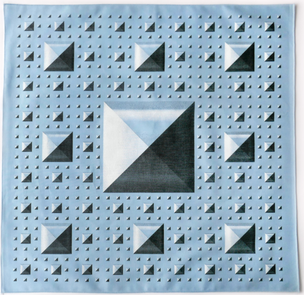“Background and additional observations: At an early age I was taken to a hospital where my mother gave birth to my seven-month-old brother who lived only a few hours inside an incubator. I remember him as a small, motionless mass of pink skin, with the holes of the nose and ears sealed with cotton. My father asked me to say goodbye with a kiss. I still have the feeling of kissing soft plastic. Dust and ashes was the original title of this set of observations. The images have been produced almost automatically, like this writing exercise.
During my teenage years, I developed the mania of looking for my father by calling him on the phone several times a day. I had the feeling something would happen to him, some sort of accident, robbery, even murder. When he died, just a few years ago, I found him in an emergency room, with his jaw exposed, opened by a respiratory tube that went through his mouth and throat. From that paranoia I developed the mania of looking at police press covers just to make sure no loved one was on the front page. Last year a student of mine was murdered by her boyfriend. The next morning, as I approached the newspaper stand, my fear materialized in the last image I would see of her. The man in the foreground, she in the background, in her bed, blurred. I couldn’t hold the look. I immediately felt a pain in my chest.
Chest pain could have been another title. The body is always exposed to friction with other bodies. We can literally trample on ourselves, make soap with our own fat. During a period of time I visited factories with the intention of observing machines and portray workers. Then I looked for people in the street and invited them to the studio. Later, I put ads in a newspaper and people came alone. I portrayed them naked, half-naked or dressed in black clothes. Sessions of 150 to 300 photographs. The flash makes people’s eyes red. We always began up front until we reached one profile and then the other. The act itself reinterpreted an authoritarian submission. A register of unemployed and underemployed willing to show themselves for an economic remuneration.
From some of the portrayed I obtained specific data that provided information on vulnerable aspects. Each person portrayed represents a person in flesh and blood. Each one with its own circumstance. One of them, for example, was hire by the medical industry, his job is to ingest pills and then undergo laboratory tests. To be observed by transnationals is surely more profitable than to pose without a shirt. The best paid, says this man, are antidepressants. Another one, with ten surgeries performed on his face, decided to live permanently inside a car, a kind of voluntary social exile. Today, the car is no longer there. The man either. Cars are shredded and sold by parts.
The interior of an ambulance without the injured produces boredom. One ends up not differentiating between the things that go through one’s head and those that you have seen with your own eyes. A girl with broken bones. A taxi driver crushed by a trailer. A mother who watches her son get up for the last time to fight the paramedic, as if he had shot the bullet that pierces his back. It is predicted that this man will not reach the operating room. Loneliness and emptiness are magnified inside an ambulance without the injured.
In the history of clinics, hospitals serve as control and isolation centers. A doctor, specialist in glands, gives me access to one of his interns. The man shows the camera a voluminous body. Nothing is anomalous here. To analyze people, classify them, use them, discard them and replace them once their capacity for resistance is diminished, this is a historical pattern, a norm.
On the resistance of bodies is the last title of this set of observations. My name: José Luis Cuevas, son of Alfonso and Margarita, Mexican, alone, without children. At the end of this project I reached 43, in my country, a symbolic number. The production of these images coincides with a long period of recurrent dreams in which, while I sleep, society suffers scarcity, repression, concentration of people, civil war and violence.” - The artist






















![Protect Me From What I Want Wooden Postcard [Gold Text]](https://d23eqwv5slm408.cloudfront.net/api/file/1rE09CiPQpGMa3jDySHP/convert?fit=max&h=480&w=304&compress=true&fit=max)
![Words Tend To Be Inadequate Wooden Postcard [Gold Text]](https://d23eqwv5slm408.cloudfront.net/api/file/HhtS8vASTpWSUA41En0s/convert?fit=max&h=480&w=304&compress=true&fit=max)


![All Things are Delicately Interconnected Wooden Postcard [Gold Text]](https://d23eqwv5slm408.cloudfront.net/api/file/muHR6MdRL6EgJe6ATC1m/convert?fit=max&h=480&w=304&compress=true&fit=max)



![Protect Me From What I Want Wooden Postcard [Red Text]](https://d23eqwv5slm408.cloudfront.net/api/file/xKZZfpWNQRChHZkrFntw/convert?fit=max&h=480&w=304&compress=true&fit=max)
![All Things are Delicately Interconnected Wooden Postcard [Silver Text]](https://d23eqwv5slm408.cloudfront.net/api/file/Omkx9rurTfKoRgqObG5L/convert?fit=max&h=480&w=304&compress=true&fit=max)

![All Things Are Delicately Interconnected Wooden Postcard [Red Text]](https://d23eqwv5slm408.cloudfront.net/api/file/C6N6ppL6SnKYeXJuCtbd/convert?fit=max&h=480&w=304&compress=true&fit=max)









![In a Dream You Saw a Way to Survive and You Were Full of Joy Wooden Postcard [Black Text]](https://d23eqwv5slm408.cloudfront.net/api/file/WEd4Y05lROcLsySIoRfJ/convert?fit=max&h=480&w=304&compress=true&fit=max)
![Lack of Charisma Can Be Fatal Wooden Postcard [Red Text]](https://d23eqwv5slm408.cloudfront.net/api/file/KMt0MXg2QV6BBtFafHlT/convert?fit=max&h=480&w=304&compress=true&fit=max)
![Thee Almighty & Insane: Chicago Gang Business Cards from the 1970s & 1980s [Third Edition]](https://d23eqwv5slm408.cloudfront.net/api/file/LkZ8Y1wnSQNAHOeIsZ2Q/convert?fit=max&h=480&w=304&compress=true&fit=max)
![The Breakdown Comes When You Stop Controlling Yourself and Want the Release of a Bloodbath Wooden Postcard [Black Text]](https://d23eqwv5slm408.cloudfront.net/api/file/Yq72qCUcTzenjZPmDHHH/convert?fit=max&h=480&w=304&compress=true&fit=max)
![Raise Boys and Girls the Same Way Wooden Postcard [Red Text]](https://d23eqwv5slm408.cloudfront.net/api/file/uV8m1BsaQ6OCflSE578g/convert?fit=max&h=480&w=304&compress=true&fit=max)
![Money Creates Taste Wooden Postcard [Black Text]](https://d23eqwv5slm408.cloudfront.net/api/file/FDyWtNrERsKaawMR4dY8/convert?fit=max&h=480&w=304&compress=true&fit=max)















![2025 Slingshot Spiral Desk Organizer [Large]](https://d23eqwv5slm408.cloudfront.net/api/file/ZgnUiIyGQvCJckBO913B/convert?fit=max&h=480&w=304&compress=true&fit=max)
![2025 Slingshot Spiral Organizer [Small]](https://d23eqwv5slm408.cloudfront.net/api/file/KZ7ZLJgxSUOwmKWv37hA/convert?fit=max&h=480&w=304&compress=true&fit=max)







![Blue Moon Ari Marcopoulos T-Shirt [X-LARGE]](https://d23eqwv5slm408.cloudfront.net/api/file/uSvA0LwzRlC8ZekANYmI/convert?fit=max&h=480&w=304&compress=true&fit=max)
![Blue Moon Ari Marcopoulos T-Shirt [LARGE]](https://d23eqwv5slm408.cloudfront.net/api/file/RVRQRVnRQtujs9DmAyCs/convert?fit=max&h=480&w=304&compress=true&fit=max)
![Blue Moon Ari Marcopoulos T-Shirt [MEDIUM]](https://d23eqwv5slm408.cloudfront.net/api/file/v9V1Mlb3RfSvN9glBNMt/convert?fit=max&h=480&w=304&compress=true&fit=max)
![Blue Moon Ari Marcopoulos T-Shirt [SMALL]](https://d23eqwv5slm408.cloudfront.net/api/file/qtNAgHVcRaqHCzkAx5B2/convert?fit=max&h=480&w=304&compress=true&fit=max)
![2025 Slingshot Organizer [Pocket Classic]](https://d23eqwv5slm408.cloudfront.net/api/file/TvyPY1HQySS4aIlgwaK2/convert?fit=max&h=480&w=304&compress=true&fit=max)
